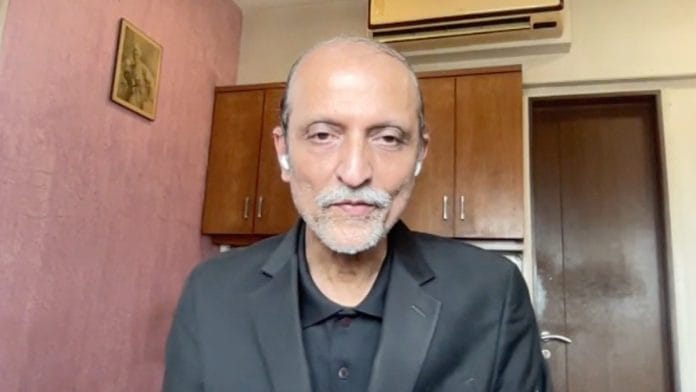New Delhi: A range of factors, core among which is the fact that Indians’ wage growth hasn’t kept pace with either inflation or economic growth, will mean that the Indian economy will grow at only about 6.5 percent in the next financial year (2025-26) as well, according to economist Ajit Ranade.
Such a growth rate, he added, was inadequate to achieve India’s goals related to inclusive growth, increasing per capita incomes, and securing livelihoods. This would also be only marginally faster than the 6.4 percent growth the government has predicted for the current financial year.
“Say for this year we are at 6.4 percent growth, then the next year we might hit 6.6 percent,” Ranade, who has previously been the chief economist at the Aditya Birla Group and vice chancellor of the Gokhale Institute of Politics and Economics, told ThePrint in an interview.
Adding, “But it won’t be a strong revival for several reasons.”
“Private investment spending needs to pick up in a substantial way, public spending cannot grow too much because of fiscal limits, interest rates are still high as inflation has not hit the 4 percent mark, and there is the highly unpredictable outcome of what Mr Trump will do with tariffs and other policies,” he said.
The problem of private investment
According to Ranade, the issue of why private sector investment is not picking up has been around for several years now. This, he added, was a further impediment to achieving the 8 percent growth that India requires.
“In investment spending, only a small part can come from the government, including the states, union government, and public sector companies,” he explained. “So private sector investment is a huge part. If you want 8 percent GDP growth, you would need at least 35 percent of GDP as investment.”
Of this 35 percent, he said that about 27-28 percent needs to come from the private sector, which includes large corporations as well as the large number of micro or household enterprises. This, however, was not visible, Ranade said.
The government’s own data, presented in the latest Economic Survey, shows that gross fixed capital formation or GFCF—a metric measuring capital expenditure by both the government and the private sector—stood at 30.7 percent in FY 2022-23 and inched up to 30.8 percent in FY 2023-24.
The FY 2023-24 data does not provide a breakup of how much came from the private sector, but the FY 2022-23 data shows that the private sector accounted for 23.8 percent of the total GFCF that financial year.
Wages are just not growing fast enough
Private investment takes place when companies either expect a demand revival or they expect strong profitability, Ranade explained.
“There is definitely a concern around the slowdown in consumer spending,” he said. “It’s a large part of GDP. Inflation, when it is high, corrodes the purchasing power of households. There is evidence from the various datasets, including the government’s Periodic Labour Force Survey, that the real wage rates have remained stagnant, and it’s not just for the last 1-2 years. There is research to show that this has been the case since 2018.”
In other words, he said, the rate of growth of corporate profits has been much faster than wage growth, something Chief Economic Advisor V. Anantha Nageswaran has also pointed out as recently as last month.
World-beating growth is the wrong metric
Ranade said that India’s 6-6.6 percent growth rate this fiscal year, and about 6.5 percent next fiscal year would keep it at the top spot among major economies globally, but “we are barely ahead of the others”.
“In that case, technically speaking we would remain the fastest-growing among the large economies, but the relevant race isn’t against other large economies,” Ranade said. “We have to maintain our own pace at a fairly healthy number—about 7-7.5 percent at least—in order to achieve the multiple goals that we have, of inclusive growth, increasing per capita incomes, secure livelihoods, and a variety of such things.”
Also Read: India must revise its definition of middle class. Those earning Rs 1 cr aren’t ‘rich’ anymore







5% GDP growth on a base of $ 18 trillion. 6.5% on a base of $ 3.8 trillion. Population size equal. That has a direct bearing on removal of poverty, better HDI outcomes.